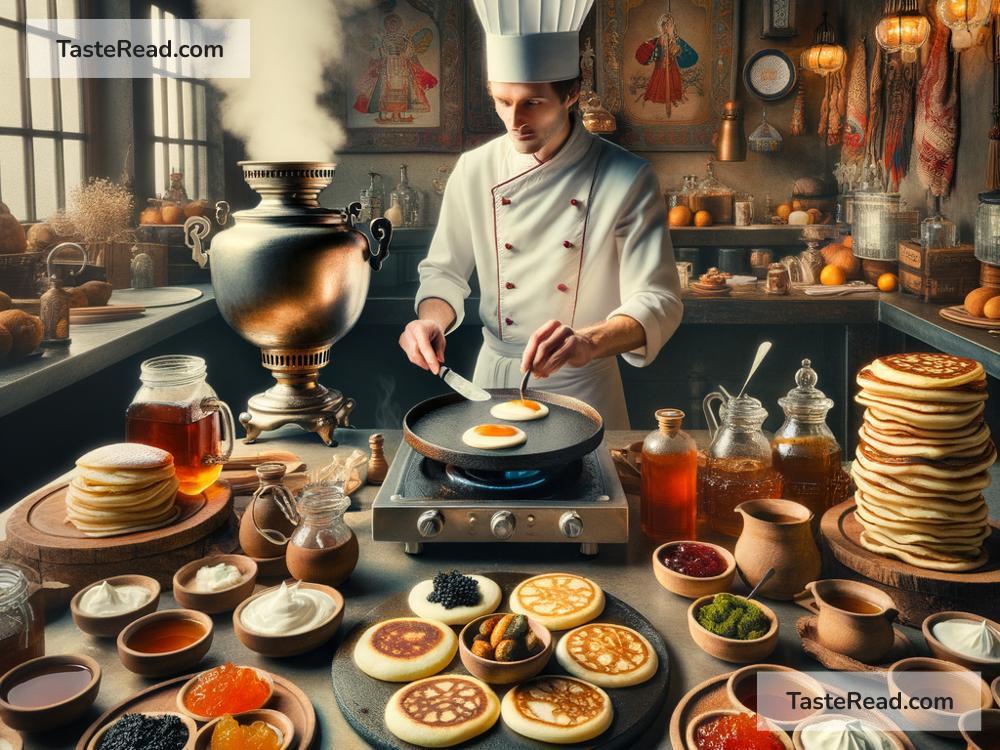Journeying Through Authentic Russian Blini Rituals in Moscow, Russia
Russia is a land of tradition, history, and delicious food, and no dish is more iconic than the beloved blini. Thin, round, and golden, blini are Russia’s version of pancakes—but they mean so much more than just food. In Moscow, the heart of Russia, you can fully experience the unique rituals and culture surrounding blini. Whether you’re visiting during Maslenitsa (the “Butter Week”) or enjoying them on an ordinary day, blini have a rich story to tell.
What Are Blini?
Blini are thin pancakes made from simple ingredients: flour, milk, eggs, and sometimes yeast. They resemble crepes and can be sweet or savory, depending on the topping or filling. Traditionally, blini were cooked in Russian villages over an open flame before modern stoves came into use. Their circular shape symbolizes the sun, warmth, and the end of winter, making them more than just food—they’re a cultural icon.
The Tradition of Maslenitsa
If you’re lucky enough to visit Moscow in late February or early March, you’ll experience Maslenitsa, a colorful week-long festival marking the end of winter. Known as the “Butter Week” or “Pancake Week,” Maslenitsa is a pre-Lenten celebration filled with joy, laughter, and plenty of blinis.
During Maslenitsa, Moscow transforms into a lively feast for the senses. Streets, parks, and squares are filled with outdoor stalls, music, and vibrant decorations. Blini are everywhere—from small cafes to big street markets. People exchange them as gifts, share them with friends, and eat them as a symbol of unity and abundance. Visitors are encouraged to join the fun and indulge in as many blinis as they like. The toppings range from simple butter and sour cream to luxurious options like caviar, smoked salmon, or sweet jams.
The festival also includes traditional activities like sledding, singing folk songs, and watching colorful performances. Crowds gather for the grand finale: the burning of a straw effigy that symbolizes the departure of winter and the arrival of spring. It’s an unforgettable experience, and blinis are central to it all.
Making Blini at Home or in a Russian Kitchen
For those who want to connect with Russian culture on a deeper level, a cooking class to learn how to make blini is a must. Moscow offers various opportunities to meet local chefs or home cooks who can show you the secrets of authentic blini-making. You’ll learn how to mix the batter until it’s smooth, how to swirl it expertly in a hot pan, and how to achieve the perfect golden-brown edges.
The real magic happens when it’s time to add the toppings. Russians love experimenting with flavors. Sweet blinis may be served with honey, berries, or condensed milk, while savory blinis could feature sour cream, mushrooms, or pickled herring. If you’re feeling adventurous, try blinis paired with salmon roe or even sturgeon caviar—true Russian delicacies.
Sharing your homemade blini with new friends or locals is highly encouraged. Russians believe food has the power to bring people together, and you’ll find that their warm hospitality makes every bite even more special.
Blini Beyond Maslenitsa
While Maslenitsa is a highlight of the year, blinis are enjoyed all year round in Moscow. You’ll find them served in restaurants, cafes, and even street kiosks. Teremok, a popular fast-food chain in Russia, specializes in affordable and tasty blini, making it a great option for travelers on the go. For a more luxurious experience, try a sit-down meal at a high-end restaurant like Café Pushkin, where blini are served with elegant toppings like caviar and crème fraîche.
Many locals also associate blini with family gatherings. They are often cooked during holidays or simply as a treat for loved ones. Some grandmothers have secret recipes passed down through generations, while others prefer experimenting with modern techniques.
The Soul of Russia in Every Bite
What makes blini special isn’t just their flavor or versatility—it’s the way they unite people and preserve tradition. Each bite tells a story of community, celebration, and respect for Russian culture. Whether you’re eating them at a festive market during Maslenitsa or making them in a cozy kitchen, blini offer a unique window into Moscow’s vibrant soul.
Tips for Enjoying Blini in Moscow
-
Explore Local Markets: During Maslenitsa or throughout the year, visit outdoor markets to try freshly made blini with various toppings.
-
Take a Cooking Class: Learn how to make blini from locals and create unforgettable memories while immersing yourself in Russian culture.
-
Try Different Toppings: Be adventurous! Caviar may seem intimidating, but it’s worth experiencing the true Russian palate.
-
Enjoy the Festivities: If you’re visiting during Maslenitsa, participate in the celebrations beyond just eating blini. Sledding and folk performances give you the full festival spirit.
-
Savor the History: Remember the symbolism behind blini—the sun, warmth, and the connection between past and present.
Final Thoughts
Journeying through Moscow’s blini rituals isn’t just about eating pancakes—it’s about celebrating tradition, connecting with local culture, and making memories that last a lifetime. Whether you’re flipping a blini in the kitchen, enjoying it at a market, or joining in Maslenitsa festivities, every bite carries a piece of Russia’s story. So, pack your bags, bring your appetite, and let Moscow show you the magic of authentic Russian blini.


